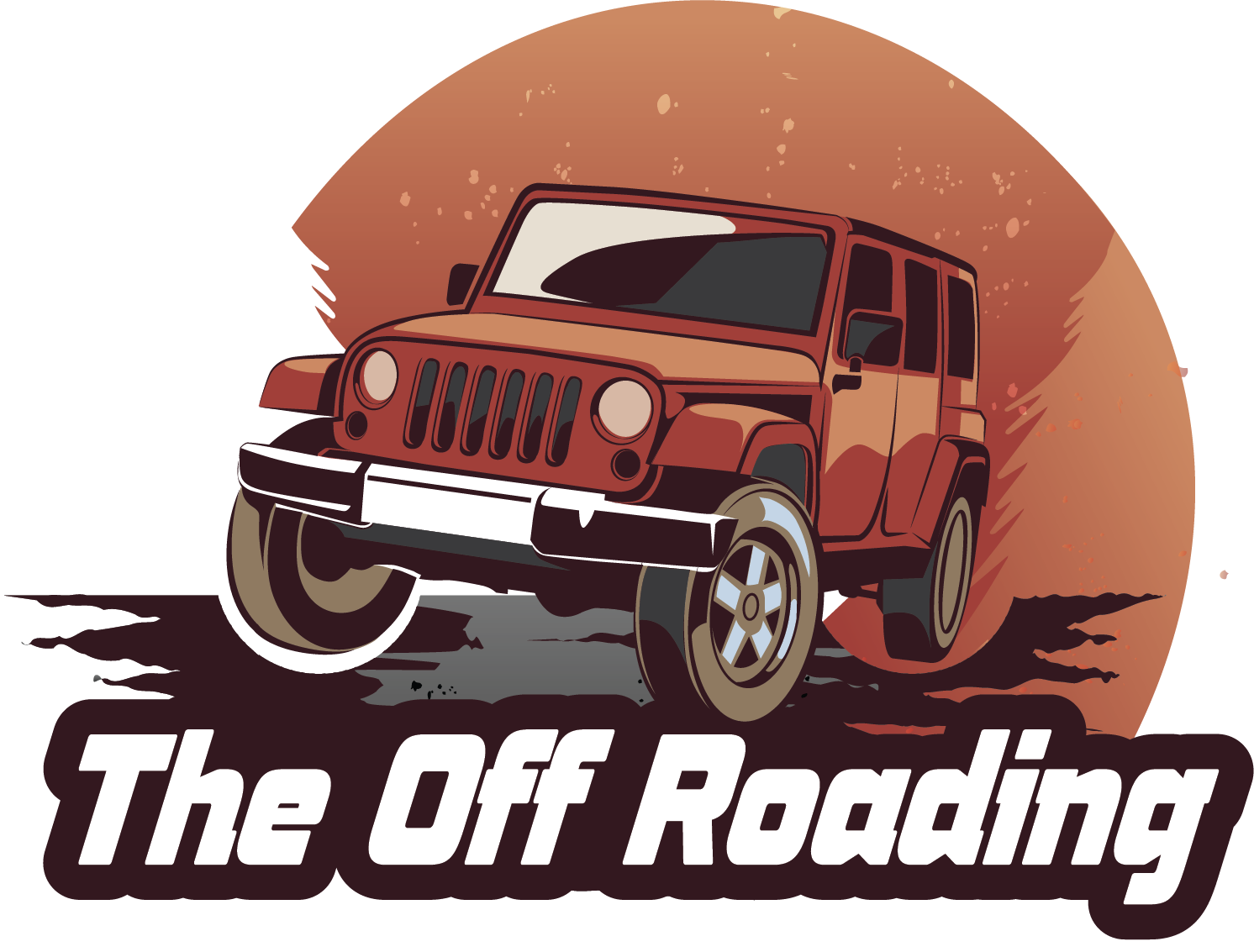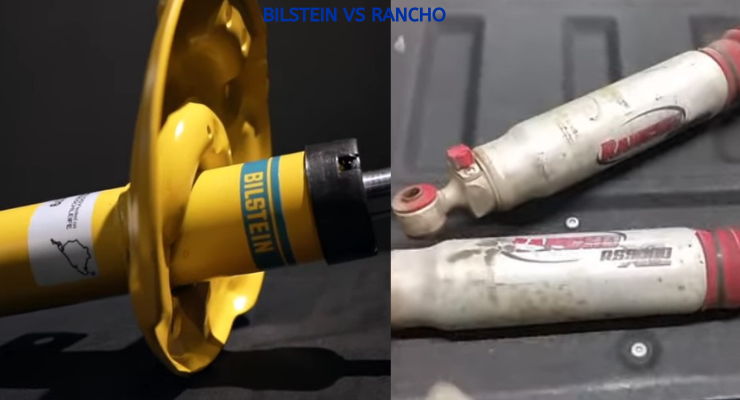Crossover Steering vs High Steer: A Comprehensive Comparison
Modifying and enhancing your vehicle’s steering system can transform its off-road capabilities. Two popular approaches used by off-road enthusiasts are crossover steering and high steer.
But what exactly sets these two systems apart?
This article will provide a detailed comparison of crossover steering and high steer, examining their advantages, disadvantages, costs, installation complexity, and more.
With the right insights, you can determine which upgrade makes the most sense for your ride. So, let’s dive in and demystify these two off-road steering setups.
Steering Systems Overview
Before looking at crossover and high steer specifically, it’s helpful to understand steering systems broadly.
Your vehicle’s steering mechanism allows you to control its direction. It converts the rotary motion of the steering wheel into linear motion that turns the front wheels.
Key components include the steering wheel, steering column, steering gear, tie rods, steering knuckles and more. Upgrades like crossover and high steer modify elements of the system for enhanced off-road performance.
The Significance of Choosing the Right Steering Setup
Your steering setup plays a huge role in handling, control, and obstacle clearance when off-roading. The wrong configuration can limit your capabilities or even damage components.
An optimal system improves handling on uneven terrain, protects parts from rocks and debris, and provides the clearance you need to navigate rough topography.
As a result, it’s critical to match the steering upgrade to your specific vehicle, suspension, tires and off-road needs.
Scope and Purpose of the Comparison
This comparison looks at crossover steering versus high steer in several categories: performance, cost, installation complexity, ground clearance, and more.
It aims to provide a detailed examination of the advantages and disadvantages of each so you can determine the best option for your off-road vehicle and driving priorities.
Equipped with this knowledge, you’ll be able to take your rig’s capabilities to the next level.
Watch this video first:
Crossover Steering
Crossover steering, as the name suggests, involves crossing over the steering components from their original configuration.
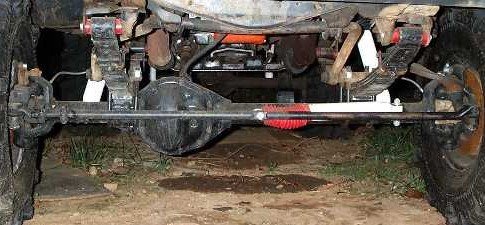
Instead of the typical setup with the tie rod attached only on the driver’s side, crossover steering crosses the steering linkage from one wheel to the other. This provides advantages, especially for off-road use.
Components and Configuration
Crossover steering retains the standard pitman arm, which turns the steering gear’s output shaft. But instead of tying just one wheel to the gearbox, crossover steering uses a drag link to join both wheels.
1. Tie Rods
The tie rods connect to each front wheel knuckle directly rather than linking one wheel to the other.
2. Drag Link
A drag link joins the steering gearbox to the passenger side wheel, crossing over from the traditional driver’s side attachment point.
3. Pitman Arm
The pitman arm geometry and linkage angles are optimized for maximum articulation and even steering control.
Advantages of Crossover Steering
The advantages of crossover steering are discussed below –
Improved Steering Geometry
Crossover steering enhances steering geometry by linking both front wheels directly to the steering gearbox rather than just one side.
This allows for optimized steering angles during suspension articulation as the wheels move through their range of motion.
The improved geometry provides more precise control, especially when driving over uneven terrain where wheels are constantly moving at different angles.
Drivers report noticing a significant difference in how smoothly and accurately they can steer during off-road conditions with crossover steering.
Enhanced Off-Road Performance
In addition to the benefits of optimized geometry, connecting both front wheels directly to the steering box gives crossover steering an advantage in precise steering control.
With this symmetrical configuration, both wheels turn in tandem, reacting equally to steering inputs.
This tuning of both wheels makes steering more consistent and accurate on loose or shifting surfaces. Drivers can finely tune their path over obstacles, ruts, and side-slopes.
The enhanced precision empowers drivers to pick exact lines through challenging off-road conditions.
Cost-Effective Upgrade
While high-end crossover steering kits are available, basic kits with the essential crossover steering components can be relatively affordable, often in the $200-500 range.
For off-road enthusiasts on a budget, crossover steering offers a meaningful upgrade over stock steering at a wallet-friendly price point.
The improved geometry and dual-wheel steering precision provide substantial benefits even from basic crossover kits using stock tie rods and drag links.
This makes crossover steering a cost-effective upgrade for enhancing off-road performance without breaking the bank.
Disadvantages of Crossover Steering
Nothing is perfect, not even crossover steering. Let me show you –
Limited Ground Clearance
One key disadvantage of crossover steering is that it retains a similar tie rod position as the stock setup. Unlike high steer configurations that relocate the steering linkages upward, crossover steering does not provide increased ground clearance.
This leaves the tie rod vulnerable to impacts from rocks, ruts, and other obstacles on very rugged terrain. If maximizing ground clearance is a priority, crossover steering may not be the best choice.
Vulnerability to Damage
Related to the lack of increased clearance, the tie rod remains in harm’s way with crossover steering.
The symmetrical configuration connects both sides rather than just one, meaning both tie rods could potentially sustain damage if they strike rocks or other debris.
This vulnerability is a trade-off versus the protection that a high steer’s raised height provides.
Installation Complexity
While crossover steering avoids the need for specialized tall components, attaining proper steering geometry can still be tricky.
Achieving the right linkage lengths and angles to optimize performance requires careful measurement, adjustment, and testing.
Installation is certainly feasible for experienced DIYers, but expecting straightforward bolt-on convenience would be misguided. Doing crossover steering right involves attention to detail and some trial and error.
High Steer
High steer, as you may have guessed, involves raising the height of the steering components above their original location. This is typically done by using taller steering knuckles and arms that position the tie rod higher up.
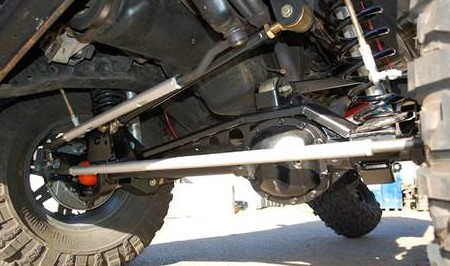
Components and Configuration
The components of high steer include –
1. Steering Knuckles
High steer uses taller, extended knuckles to relocate the steering linkage connection points above the axle.
2. Steering Arms
Similarly, extended steering arms mount the tie rod ends at a higher point on the knuckles.
3. Drag Link
The raised location of the tie rod ends leads to an accordingly taller drag link.
Advantages of High Steer
Take a look at the advantages of high steer are discussed below –
Increased Ground Clearance
High steer lifts the steering linkage connections higher up above the axle housing using extended steering knuckles and arms. This results in significantly improved ground clearance versus stock configurations or crossover steering.
The extra clearance allows driving over larger obstacles without damaging steering components.
Reduced Vulnerability to Damage
In addition to added clearance, high steer’s raised steering links are less vulnerable to impacts and damage from rocks, ruts, and other trail obstacles.
Keeping the critical steering links far out of harm’s way enhances durability in extreme off-road conditions.
Improved Steering Angle
High steer arrangements can accommodate longer drag links, which reduces bump steer by minimizing steering angle changes during suspension articulation. This helps provide more consistent and stable steering control.
Disadvantages of High Steer
High steer isn’t without its shortcomings either, have a look –
Higher Cost
High steer kits and parts are more specialized than basic crossover steering components. The knuckles, arms, drag links, and more lead to higher costs, typically over $500. The increased fabrication complexity also adds expense.
Potential for Steering Geometry Challenges
If high steer geometry is not properly dialed in, it can introduce bump steer issues and unpredictable handling. Attaining ideal angles may require additional tweaking.
Compatibility Issues with Stock Parts
High steer changes more aspects of the steering system, so it may not work optimally with stock pitman arms, drag links, track bars, and other components. Additional modification is often needed.
Comparison Factors
Now that we’ve introduced with the different mechanisms of crossover steering and high steer; let’s compare them –
Off-Road Performance
Crossover steering enhances off-road handling through optimized steering geometry that links both front wheels directly to the steering gearbox.
This provides excellent control and maneuverability in uneven terrain by allowing smooth steering articulation.
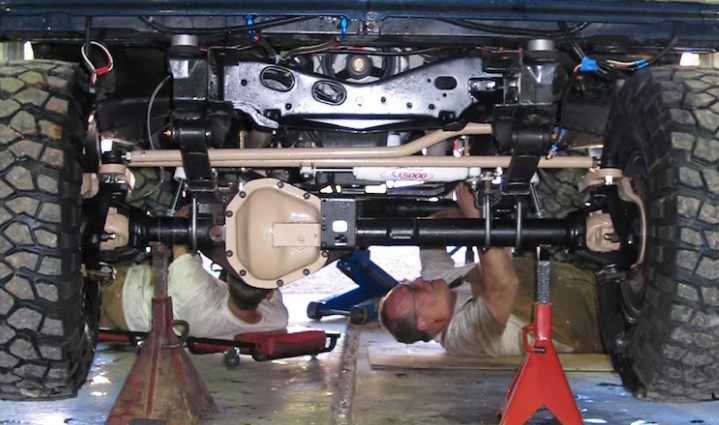
In contrast, a high steer lifts steering components higher but doesn’t necessarily improve geometry. The increased clearance protects parts but doesn’t inherently boost precision. Explore, Dana 30 Vs 35: An In-Depth Comparison Guide
On-Road Performance
Properly set up crossover steering maintains a responsive steering feel and predictable handling on-road. The optimized geometry retains good steering feedback.
High steer’s taller components can negatively impact road handling by raising the center of gravity. This may decrease stability at highway speeds.
Cost Considerations
Basic crossover steering kits range from around $200-500, providing good value. High steer’s specialized parts and complex fabrication typically cost over $500.
Crossover steering offers meaningful upgrades for less initial investment.
Installation and Compatibility
Crossover steering uses mostly stock steering parts, so installation is more straightforward. High steer requires lifting and modifying more components, so installation intricacy increases.
Crossover steering also retains better compatibility with existing suspension systems.
Ground Clearance
Crossover steering doesn’t boost ground clearance since the tie rod position remains similar. Conversely, high steer excels here by raising the steering linkages significantly, increasing clearance for obstacles.
If maximizing clearance is critical, high steer has a substantial advantage.
Additional Factors
- Crossover steering allows retaining power steering, whereas high steer typically requires switching to manual steering.
- High steer puts more stress on steering components due to increased leverage from longer links.
- Crossover steering angle changes are reduced during suspension travel compared to stock steering.
- Brake line routing may need to be modified with high steer but not crossover steering.
In summary, crossover steering optimizes precision and geometry, while high steer prioritizes clearance.
Choosing the best match depends on weighing factors like cost, performance needs, compatibility, and installation difficulty.
Here’s a table summarizing the factors to consider when choosing the right steering setup –
| Factors to Consider | High Steer | Crossover Steering |
| Vehicle Type and Usage | Ideal for rock crawlers. | Precision for overlanding. |
| Maximizes clearance. | ||
| Budget Considerations | Generally higher cost. | Meaningful improvements at a lower cost. |
| Cost may be a limiting factor. | Suitable for budget-conscious buyers. | |
| Off-Road vs On-Road Priorities | Excellent off-road performance. | Precision steering for various terrains. |
| On-road trade-offs may exist. | On-road stability may vary. | |
| Installation Resources | May require professional installation. | More DIY-friendly installation. |
| It’s a complex installation for some. | Suitable for DIY enthusiasts. | |
| Desired Ground Clearance | Provides increased ground clearance. | Focuses on geometry and precision. |
| Ideal for rugged off-road terrain. | It may not maximize ground clearance. |
Conclusion
To recap, crossover steering improves precision through optimized geometry, while high steer enhances clearance and protection by relocating steering linkages upward.
Crossover steering shines for control and handling but doesn’t increase clearance. High steer boosts clearance significantly but involves on-road trade-offs. Overall costs also tend to be higher.
Analyze your specific off-road goals and vehicle platform to choose the best system. Seek input from other enthusiasts online or at off-road events as you research options.
